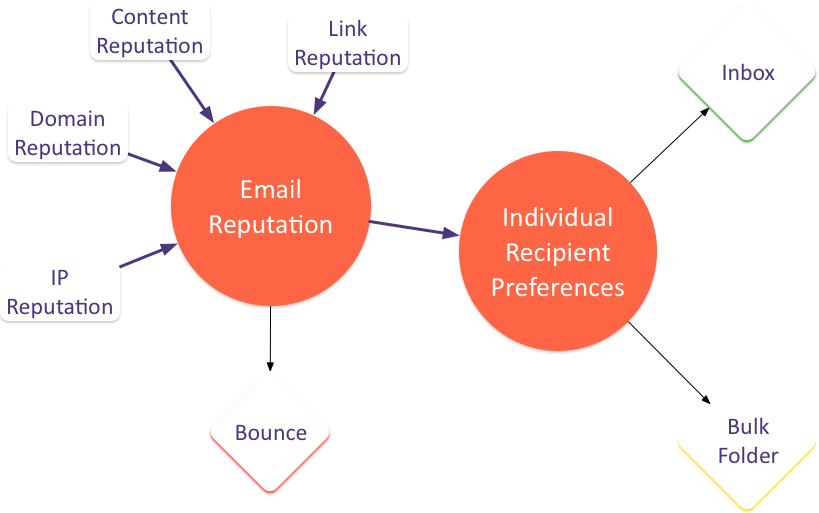Re-adding subscribers after reputation repair
- laura
- February 26, 2019
- Best practices
A comment came in on Engagement and Deliverability and I thought it was a good question and deserved a discussion.
Good article. My question about Gmail engagement is how would I reach someone who has not been opening my emails? Say I want to do a re-engagement campaign. If I temporarily suppress a contact from my list for a period of time and only send to my engaged contacts, will that contact potentially get an email in the future if my reputation improves? Or is the contact essentially lost to the spam folder abyss if their emails start going there for engagement reasons?

The short answer is that yes, you can add in contacts after repairing reputation and expect them to get the mail in the inbox. There are some caveats, though.
Part of any reputation repair process is letting some of your recipients go for good. I know some folks think they can simply repair reputation and then go back to mailing the same as they did before. But that’s not how reputation works. Unless there is one precipitating incident – like a phishing page on your domain or one mailing that is clearly something unintended reputation reflects all the mail that you’re sending. If you get to a place where you have to repair reputation, then you need to make some changes to your data.
Let old subscribers who are unengaged for long periods of time go. 24 months is pretty safe, you can be more aggressive, like 12 or 18 months, but I wouldn’t advise being less aggressive.
Next trickle folks back into your active mailings slowly. Don’t take your full 2 year database and mail it. That’s the way to destroy all your hard work on reputation repair. Instead, start adding recent engagers in batches. There are different ways to structure the batches. For instance, you can increase your list by 10% a week, adding in old addresses. You may find that there is a point where you see a reputation change – like you’re adding addresses from 18 months ago and Gmail reputation falls or FBL emails increase. This is a sign to slow down, stop or change tactics.
Whatever you do, monitoring is key. Your own internal metrics – FBL numbers, Google postmaster tools, probe accounts (yours and commercially available ones), opens, clicks, bounces – will tell let you monitor how delivery is going. You can make adjustments on the fly. Try things like slowing down the addition of addresses or move the new addresses into a re-engagement stream rather than your main mail stream. Decisions are driven by data. Collect everything you can get.
Overall, the population of recipients you choose for reputation repair isn’t the only population of recipients you will ever be able to contact. Unless a recipient actually marked you as spam, you will be able to reach their inbox.
